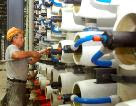
Tzvi Ben Gedalyahu I
A7 News
A huge new desalination plant dedicated this week is planned to help end Israel’s constant worry for enough water for farms, factories and homes. “Water, water everywhere and more to drink” may be a new phrase for Israel as the new plant begins to pump 10 percent of Israel’s water needs. AThe facility on the Mediterranean Coast at Hadera, located between Haifa and Tel Aviv, is the largest of its kind in the world and the third largest in Israel. Two more plants are on the drawing boards, with all five of them projected to provide two-thirds of the nation’s water.
The desalinated water will be cheaper than the cost of pumping from the Kinneret (Sea of Galilee) to the national water carrier, according to Teddy Golan, CEO of the IDE Technologies group that built the 1.5 billion shekel ($400 million) desalination plant.
President Shimon Peres was on hand and raised a cup of water to toast the new project. If all goes according to plan, the Kinneret will return to flood levels in several years after all of the desalination plants come on line. The desalinated water from the Mediterranean also will allow the dams to the Kinneret to be opened and help replenish the drying Jordan River and the rapidly depleting Dead Sea.
The Hadera plant uses reverse osmosis technology, which means the sea water does not have to be heated, as is done in larger plants in the world that are less environmentally friendly. The entire process of desalinating the water takes 35 minutes from the time it enters pipelines in the sea.
The mammoth plant covers more than 18 acres and actually is two facilities that can operate independently from each other. Together, they can provide 127 cubic million liters, or 33 million gallons a year.
No comments:
Post a Comment